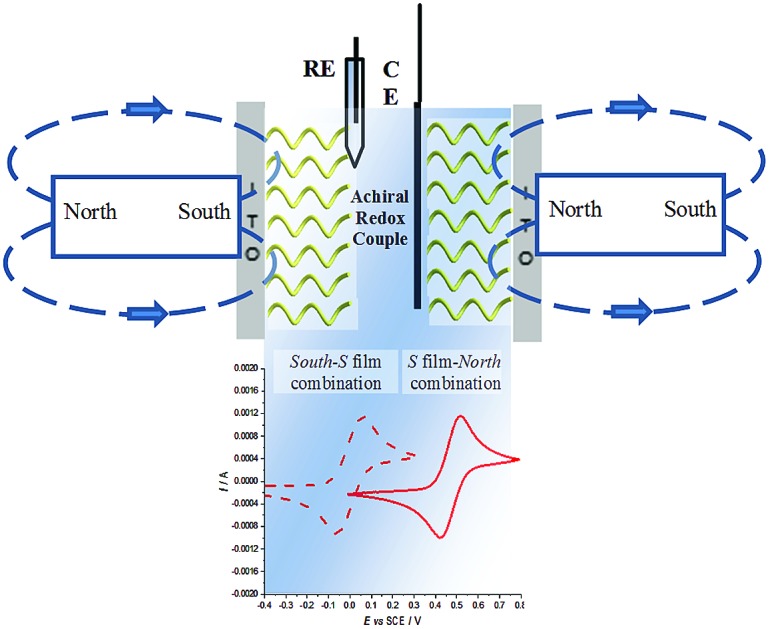- Record: found
- Abstract: found
- Article: found
Highlighting spin selectivity properties of chiral electrode surfaces from redox potential modulation of an achiral probe under an applied magnetic field†

Read this article at
Abstract

Abstract
Impressive spin-related effects are observed in cyclic voltammetry (CV) experiments performed under an applied magnetic field on a non-ferromagnetic electrode modified with a thin electroactive oligothiophene film, either “inherently chiral” or featuring chiral pendants with stereogenic centres. When flipping the magnet’s north/south orientation, the CV peaks of two achiral, chemically reversible Fe( iii)/Fe( ii) redox couples in aqueous or organic solution undergo impressive potential shifts (up to nearly 0.5 V depending on protocol conditions), specularly by changing the film’s ( R)- or ( S)-configuration. The magnitude of the potential shift decreases upon increasing both the polymer film thickness and the distance between the permanent magnet and the electrode surface. Such unprecedented spin-related redox potential modulation, obtained in the absence of a magnetic electrode acting as a spin injector, provides striking evidence (as well as an attractive evaluation criterion) of the spin selectivity properties of chiral thin films.
Related collections
Author and article information
Notes
†Electronic supplementary information (ESI) available. See DOI: 10.1039/c8sc04126a